|
E.E. (BAC) Lightning
T.4 and T.5
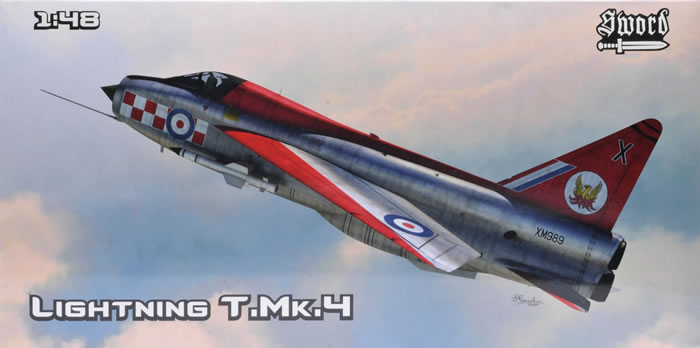
Sword, 1/48 scale
S
u m m a r y |
| Catalogue Number: |
Sword Kit Nos.:
SW48008 - E.E. (BAC) Lightning T.4
SW48009 - E.E. (BAC) Lightning T.5 |
| Scale: |
1/48 |
| Contents and Media: |
Each kit contains 103 parts in medium grey plastic; two parts in clear plastic; three parts in grey resin; markings for two aircraft on one decal sheet. |
| Price: |
Each Euro 42.59 available online from Sword
Each GBP £34.99 plus shipping available online from Hannants |
| Review Type: |
FirstLook |
| Advantages: |
First time a two-seater Lightning has been available as an injection moulded kit; well moulded; crisp fine recessed surface detail; good levels of detail throughout; high-quality glossy decals. |
| Disadvantages: |
Experience necessary.. |
| Conclusion: |
This is a welcome kit of a Lightning variant that we have not seen as a 1/48 scale injection moulded kit before. Detail is good, and careful preparation and test fitting should deliver an impressive result. |
Reviewed by Brett Green

Italeri's 1/48 scale Typhoon Mk.IB Late is available online from Squadron.com
The English Electric Lightning was a remarkable and unique aircraft in many ways. In an era just emerging from propeller-driven technology and sub-mach speeds, the Lightning was a gigantic leap forward.
The Lightning's design combined a novel, vertical arrangement for its two Rolls-Royce Avon turbojet engines. This powerful symmetrical configuration was aerodynamically efficient and permitted adequate performance if one engine failed. The 60 degree swept wing allowed a stunning top-speed of Mach 2.2, yet design subtleties such as the wing-tip ailerons also granted excellent dogfighting properties.
The Lightning’s speed, manoeuvrability and climbing ability was superior to all of its contemporaries when it first entered service. In common with the Mig 21, its Cold War adversary, the Lightning underwent a number of fundamental design changes over a long service life. Throughout its career, the Lightning was only limited by its restricted range and relatively inadequate weaponry.
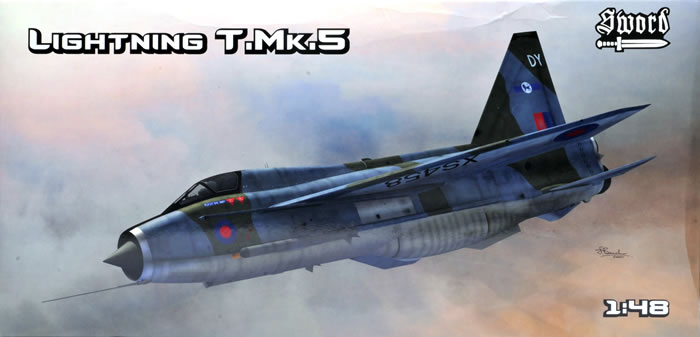
The original P.1 Lightning prototype took to the air in August 1954, and entered RAF Squadron service in 1960.
In addition to front-line duties for the RAF in the United Kingdom, Cyprus, Singapore and Germany, the Lightning F. Mk53 was exported to the Royal Saudi and Kuwaiti Air Forces. The Saudi Air Force is the only operator of the Lightning to have used the aircraft in a live conflict.
The Lightning T.4 was a two-seat side-by-side trainer version based on the F.1A, carrying two Firestreak missiles.
The Lightning T.5 was based on the F.3 with the enlarged fin and Red Top missiles.
Although Airfix released their 1/48 scale Lightnings nearly 20 years ago, we still have not seen the two-seater trainer version as an injection moulded kit until now.
Sword has redressed this shortcoming with not one but two Lightning trainers - a T.4 and a T.5 kit in 1/48 scale.
In fact, both kits are identical except for the decals and instructions. The kis features a separate tail, and both the pointy T.4 and larger F.5 are included.
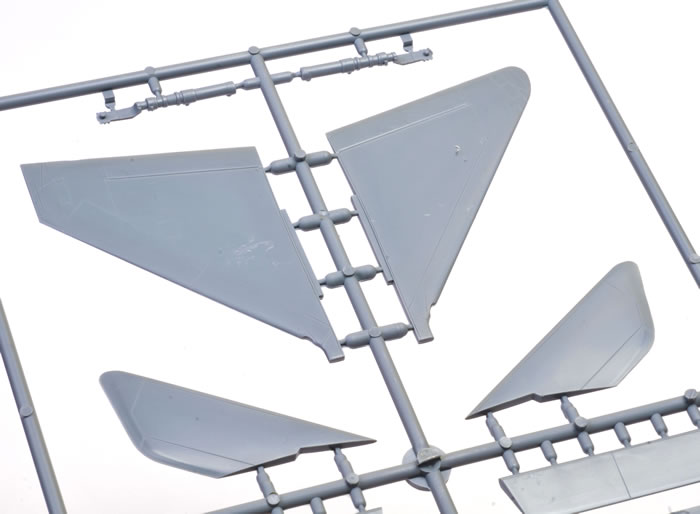
Two Firestreak and two Red Top missiles are also supplied in both kits.
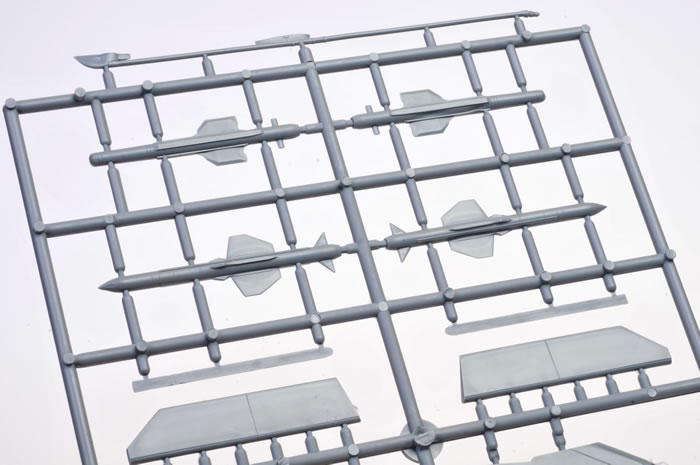
The models are moulded in shiny medium grey plastic that will be familiar to anyone who has built a Sword (or Classic Airframes) kit.
Each kit comprises 103 parts in grey plastic, two parts in clear plastic, three parts in grey resin and markings for two aircraft on one decal sheet.
This is limited run injection moulding, although there is very little flash to clean up. You'll have to do without luxuries such as locating pins though, but the wings do feature locating tabs. Be prepared to do test fitting and sanding / adjustment before committing to glue.
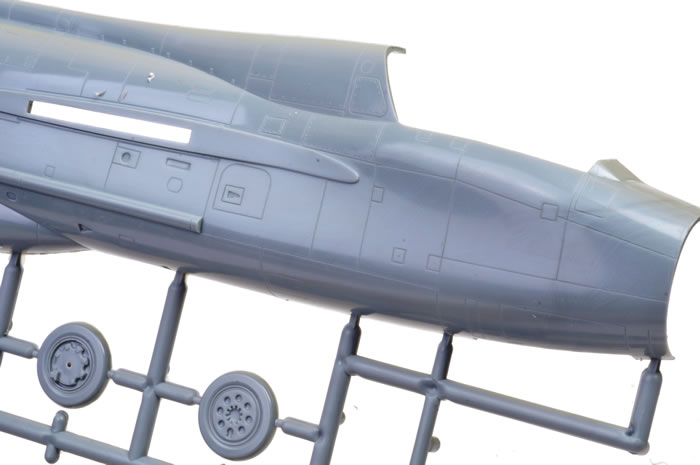
Surface textures are excellent, with crisply recessed panel detail on all the main surfaces.
The plastic cockpit is supplemented with two very nice resin ejector seats.
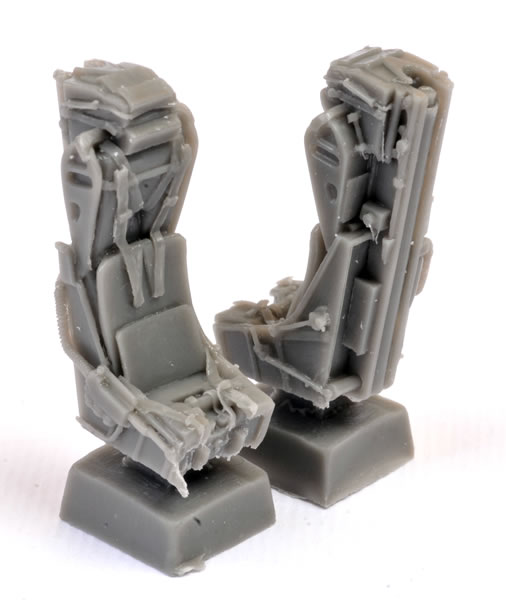
The instrument panel is injection moulded plastic and should look good after a careful paint job. Note that you will need substantial nose weight in the shock cone and probably behind the cockpit to help the front wheel to stay on the ground.
The jet nozzles and rear pipes are cast as a single resin part with nice detail at the end.
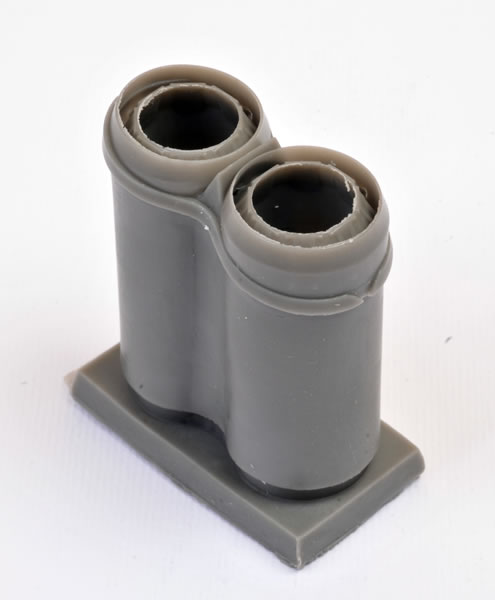
Airframe construction is simply broken down into two fuselage halves, two wings with upper and lower halves, two one-piece elevators and a choice of fins depending on your variant.
The balance of construction is made up from the undercarriage legs, doors and wheels, weapons and a few small details.
The canopy is supplied as a separate windscreen and main section, allowing the cockpit to be displayed under the open canopy if you wish. The clear parts should sparkle after a bath in Future floor polish.
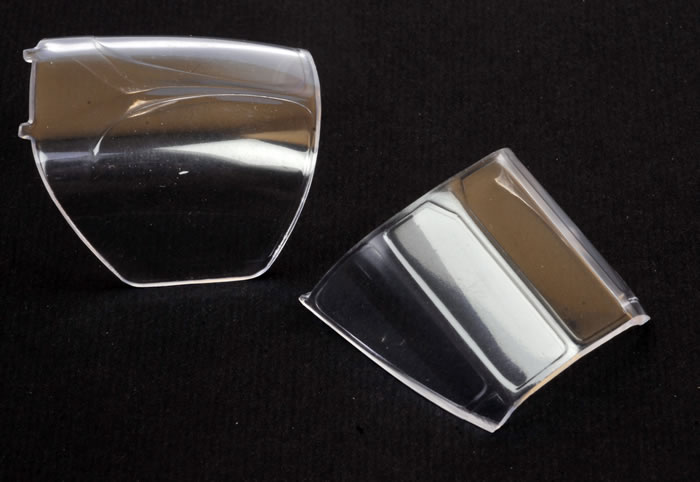
Don't let the small parts count and simple breakdown lull you into a false sense of security though. Take plenty of time to make sure that all parts are fully prepared and aligned before committing to glue.
Markings
Each kit has a large decal sheet printed by Techmod. Registration and colour looks good on both my samples.
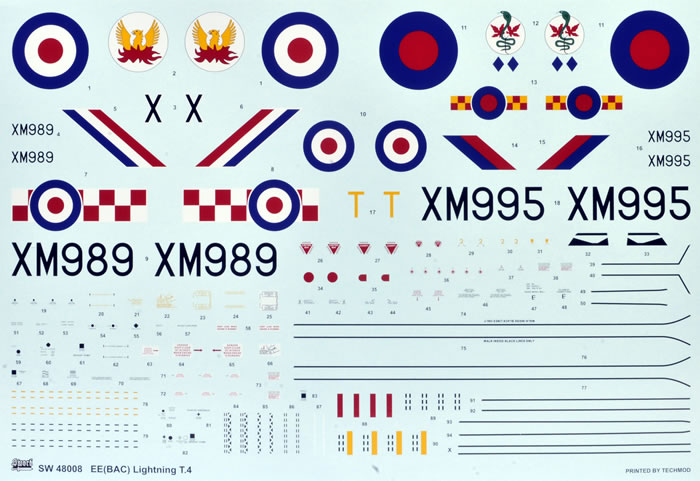
Two options are supplied on each.
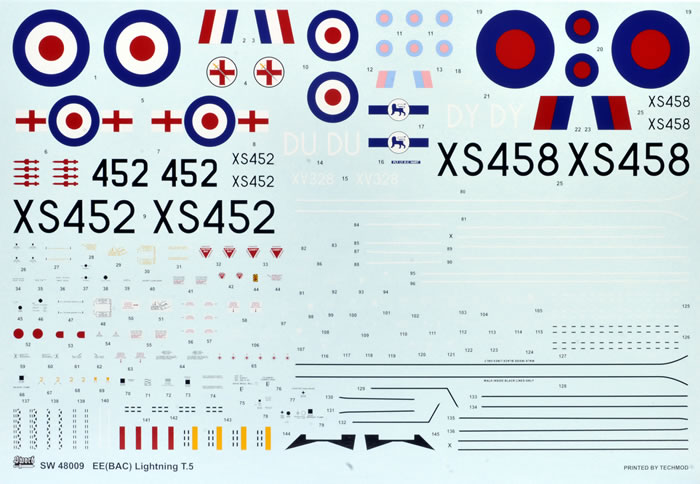
The paint guide calls out generic colours only.
Sword rarely strays into 1/48 scale territory (at least under their own brand name), but I am very pleased that they have released these two two-seater Lightnings.
Surface detail looks great, parts breakdown is sensible and detail is good straight from the box.
If you treat the limited run plastic with the respect and preparation that it deserves, you should have a big and impressive Lightning T.4 or T.5 on your model shelf.
Thanks to Sword for the sample
Review Text and Images Copyright © 2016 by Brett Green
Page Created 8 January, 2016
Last updated
8 January, 2016
Back to HyperScale Main Page
Back to Reviews Page |
